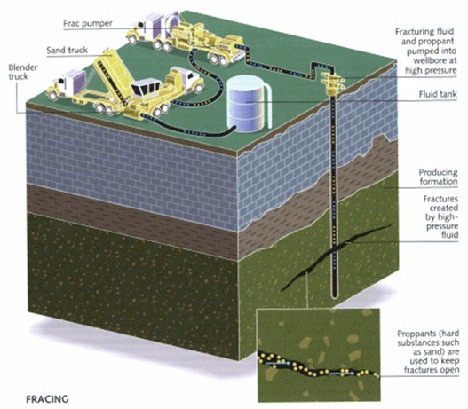
Fracking has become a common procedure for extracting natural gas, natural gas liquids, and crude oil from tight sandstone formations. The procedure is used by virtually every producer, including Chesapeake Energy Corp. (NYSE: CHK), Exxon Mobil Corp. (NYSE: XOM), Range Resources Corp. (NYSE: RRC), and others.
A new study on Pavillion’s water was released late yesterday by the U.S. Geological Survey (USGS) and it doesn’t do much to clear things up. The USGS took additional samples from two test wells in earlier this year, but under an agreement with the state the agency didn’t do much with the data it collected:
[T]he USGS did not interpret data as part of this sampling. Results are being provided to the Wyoming Department of Environmental Quality, EPA and the public. The USGS data, along with data that EPA has collected, will also be available to the peer review panel tasked with looking at the broader EPA study.
An EPA spokesperson has said that the new samples have produced results that generally support the agency’s conclusion in December that chemicals used in fracking are present in the groundwater. Encana has not responded officially to the new tests, but the Associated Press cites a spokesman who said that the test wells were “improperly constructed.”
The latest study results are available here.
Paul Ausick
Get Ready To Retire (Sponsored)
Start by taking a quick retirement quiz from SmartAsset that will match you with up to 3 financial advisors that serve your area and beyond in 5 minutes, or less.
Each advisor has been vetted by SmartAsset and is held to a fiduciary standard to act in your best interests.
Here’s how it works:
1. Answer SmartAsset advisor match quiz
2. Review your pre-screened matches at your leisure. Check out the advisors’ profiles.
3. Speak with advisors at no cost to you. Have an introductory call on the phone or introduction in person and choose whom to work with in the future
Thank you for reading! Have some feedback for us?
Contact the 24/7 Wall St. editorial team.




